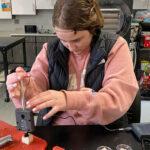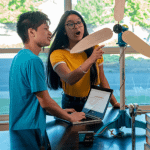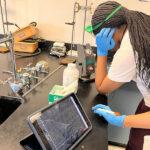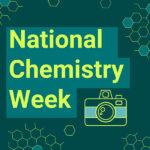
Sharing ideas and inspiration for engagement, inclusion, and excellence in STEM
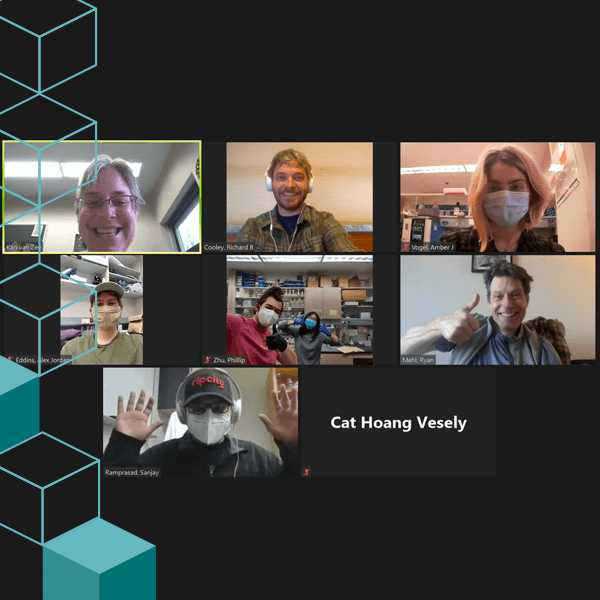
When the global pandemic forced the closure of college science departments across the nation, Dr. Kari van Zee, Dr. Ryan Mehl, Dr. Rick Cooley, and graduate student Phil Zhu—department faculty and research members at Oregon State University—had to think fast. They were faced with the unprecedented challenge of changing their hands-on senior-level research methods course so it could support remote and hybrid models of learning.
Giving Students the Gift of Discovery
The “Chemical Biology & Biochemistry Laboratory Using Genetic Code Expansion” is a senior-level research course at Oregon State University (OSU). Dr. Mehl originally designed the course when he was at Franklin & Marshall College in Lancaster, Pennsylvania. In this rigorous capstone course, students use genetic code expansion technologies to investigate the function of a specific protein. Students get hands-on experience designing their own experiments, modifying and synthesizing a protein of interest, and then testing it using a variety of instrumentation. Dr. Mehl brought this unique course with him when he began teaching at OSU almost a decade ago. With the help of Dr. van Zee, Dr. Cooley, and Zhu the course now supports almost 100 students a year. In the past, students have investigated the structure and function of carbonic anhydrase using Go Direct® SpectroVis® Plus and have also experimented with catalase using the Go Direct Gas Pressure Sensor. Independent student research from the course has even been published in scientific journals.
When the pandemic closed the OSU campus right before the 2020 spring term, the instructors only had one week to figure out how to deliver the course remotely. After a disappointing spring term, the instructors decided to make drastic changes to the course for the fall term.
“We tried moving the lab completely online, but that was a disaster.” – Dr. Ryan Mehl
Finding the Right Technology for Remote Research and Collaboration
The instructors decided to use a hybrid model that allowed students to attend class in person or remotely. Over the summer the instructors acquired plexi-glass shields for each lab station, purchased masks, and developed other safety procedures to support in-person course delivery. Because of social distancing requirements, only a limited number of students could be in the lab at any given time. To make matters worse, students residing out of state could not return to campus because of travel restrictions. That forced 20 of the 100 students to take the course remotely.
The instructors consulted with campus IT professionals and developed a creative plan to support their students while keeping things simple in the laboratory. Students would all work on the same protein with each student group modifying one amino acid site for their investigations. The instructors also decided to use the enzyme nitroreductase from E. coli because students could easily use Go Direct® SpectroVis® Plus to monitor enzyme activity colorimetrically. The class was divided into small groups of 2 to 3 students. The faculty started each lab session via Zoom and then each team was assigned a breakout room for collaboration.
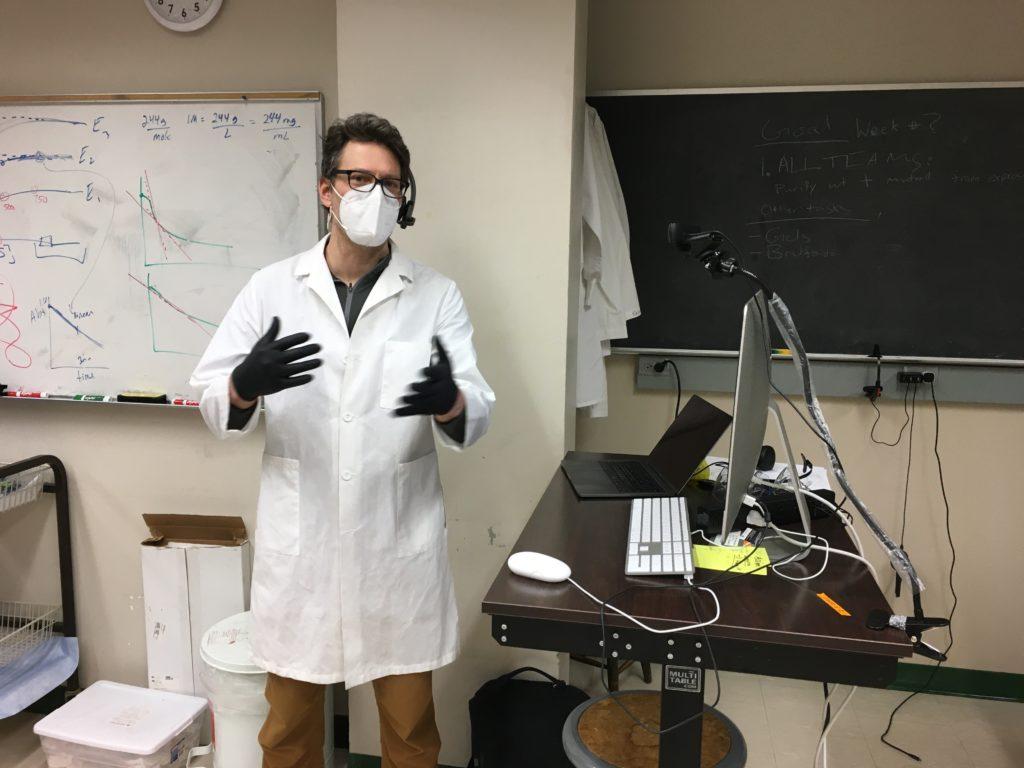
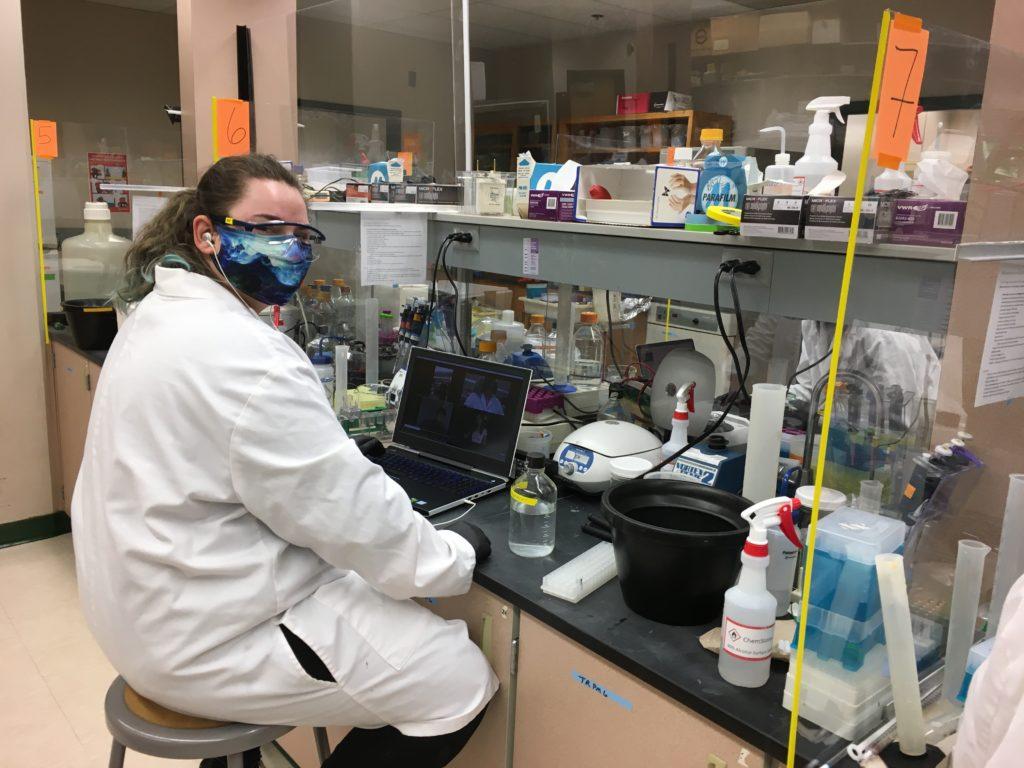
Students working in the lab could mount their smartphones to a flexible tripod and use their cameras to show other students in their group the preparation, procedures, and data-collection methods. During that term, Dr. van Zee reached out to the Biology Department at Vernier to see if a specialist could lead a remote training session on spectroscopy for students. Using our new presentation studio, our Director of Biology, Dr. John Melville, showed the students how to use Go Direct® SpectroVis® Plus to quickly collect, analyze, and export data for further analysis.
What’s Next
The course was a success, largely due to the hard work and quick thinking of the OSU instructors. Students adapted well to the hybrid model and worked well together—whether they were on campus or out of state taking the course remotely. Students quickly learned that their success was dependent upon effective communication and collaboration. Having taken fully remote courses the previous term, they already knew how to effectively use Zoom and other digital learning tools.
“I think it’s made them better lab partners.” – Dr. Kari van Zee
Under very trying circumstances, the students and faculty responded to the pandemic in the best way they could. By using an innovative course structure, implementing the technology available, and relying on each other, Dr. Mehl, Dr. van Zee, Dr. Cooley, and Zhu showed that even in the midst of a pandemic amazing things still happen.
Learn more about the Biochemistry and Biophysics program at OSU.
Share this Article
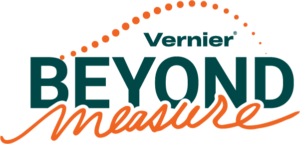
Sign up for our newsletter
Stay in the loop! Beyond Measure delivers monthly updates on the latest news, ideas, and STEM resources from Vernier.

